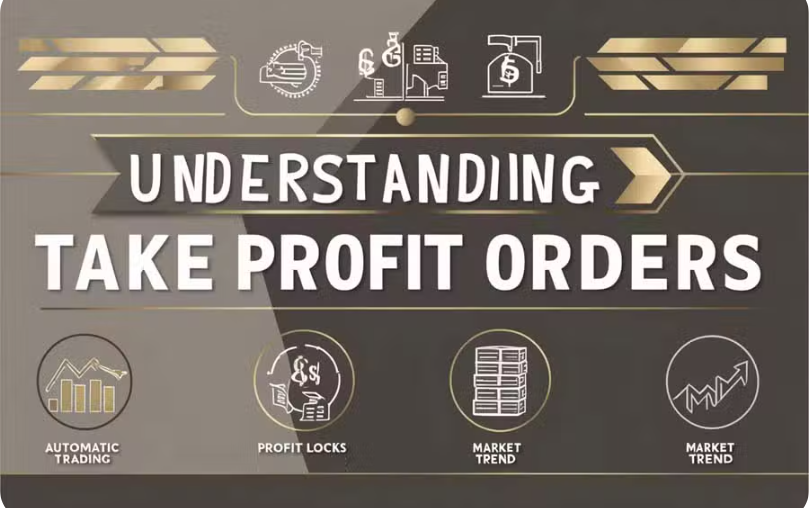How to Set Stop Loss and Take Profit Like a Pro
One of the biggest mistakes beginner traders make is ignoring the stop loss and take gain. Some place them randomly. Others don’t use them at all and end up blowing their accounts. But professional traders know better. They treat stop loss and take profit levels as part of a precise strategy, not an afterthought.
In this blog post, you’ll learn what stop loss and take profit levels are, why they matter, and how to set them like a pro whether you’re trading forex, stocks, or crypto.
What Is a Stop Loss?
A stop loss is a pre-set price level where your trade will automatically close if the market moves against you. It’s designed to limit your loss and protect your capital.
Think of it as your safety net. No matter what the market does news, emotion, sudden moves your loss is controlled.
🎯 What Is a Take Profit?
A take profit is a target price where your trade will automatically close once it reaches your desired level of profit. It helps you lock in gains without needing to constantly monitor the market.
Together, stop loss and take profit give you a clear risk-reward setup for every trade.
⚖️ Why Both Are Essential
-
✅ Removes emotion from trading
-
✅ Prevents small losses from becoming big ones
-
✅ Protects profits when you’re not at your screen
-
✅ Supports consistent trading discipline
Professional traders never enter a trade without knowing exactly where they’ll exit — win or lose.
🧠 How to Set Stop Loss Like a Pro
Here are 3 smart methods pros use to place stop losses:
🔹 1. Technical Stop (Based on Chart Structure)
Place your stop beyond a logical chart level, such as:
-
A recent swing high or low
-
A key support or resistance level
-
Outside a trendline or price pattern
Example: If you’re buying in an uptrend, place your stop just below the last swing low.
✅ Why it works: You’re allowing room for natural market movement while cutting off losses if structure breaks.
🔹 2. Volatility-Based Stop
Use indicators like the Average True Range (ATR) to determine how much the price typically moves. Then place your stop outside of that range.
Example: If ATR on EUR/USD is 50 pips, place your stop 1.5x ATR = 75 pips from entry.
✅ Why it works: Accounts for market noise and avoids getting stopped out by small fluctuations.
🔹 3. Fixed Percentage Risk
Decide in advance how much of your capital you’re willing to lose on a trade — usually 1–2% of your account.
Example: On a $1,000 account, risking 1% = $10 loss max
Now calculate your stop distance based on position size and pip value.
✅ Why it works: Keeps your risk consistent across trades.
💰 How to Set Take Profit Like a Pro
🎯 1. Risk-to-Reward Ratio (RRR)
Set your TP based on your stop loss. Most pros use a minimum of 1:2 or 1:3.
Example:
-
Stop loss = 50 pips
-
Target = 100 pips (1:2)
✅ Why it works: Even if you lose more trades than you win, you can still be profitable.
🎯 2. Chart-Based Targets
Use technical levels to set realistic profit targets:
-
Previous highs/lows
-
Support/resistance zones
-
Fibonacci extension levels
-
Trend channel tops or bottoms
✅ Why it works: You’re aiming for areas where price is likely to react or reverse.
🎯 3. Trailing Take Profit (Advanced)
Instead of a fixed take profit, let your trade run with a trailing stop that moves as the market moves in your favor.
✅ Why it works: Helps maximize profits in strong trends while protecting gains.
✍️ Example: Putting It All Together
Let’s say:
-
Account balance: $2,000
-
Risk per trade: 2% → $40
-
Trade: Buying GBP/USD
-
Stop loss: 40 pips below entry
-
Position size: 0.1 lot (1 pip ≈ $1)
-
Take profit: 80 pips above entry (1:2 RRR)
You know where you’re getting in, how much you’re risking, and what your profit goal is — before placing the trade.
That’s how pros trade.
🚫 Common Mistakes to Avoid
-
❌ Setting stop loss too tight — normal price fluctuations will stop you out
-
❌ Not using a stop loss at all
-
❌ Moving stop loss further when in loss
-
❌ Chasing unrealistic profit targets
-
❌ Ignoring market structure when placing levels
✅ Final Thoughts
Setting stop loss and take profit levels isn’t just about protecting your money — it’s about creating a disciplined, repeatable trading process. It helps you stay calm, focused, and professional — even in the most volatile markets.
So before you click “Buy” or “Sell,” ask yourself:
“Where will I exit if I’m wrong?”
“Where will I take profit if I’m right?”
“Is the reward worth the risk?”
If you can answer all three — you’re trading like a pro.


